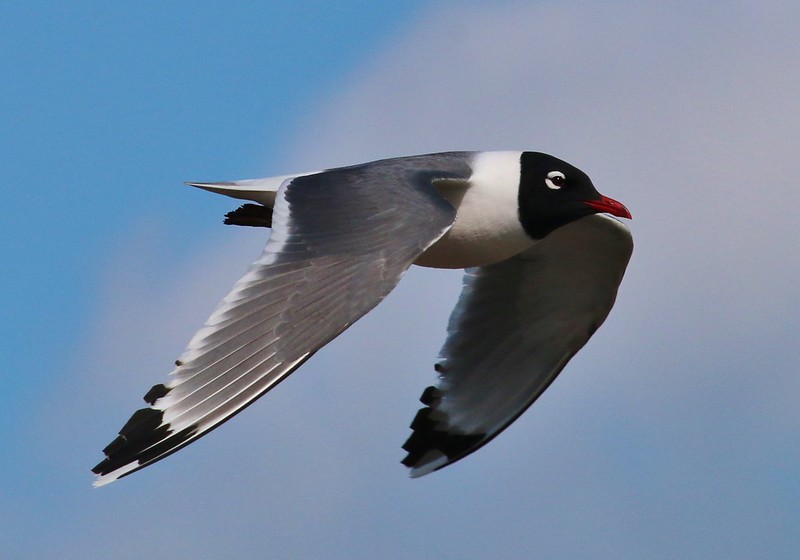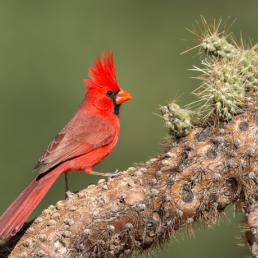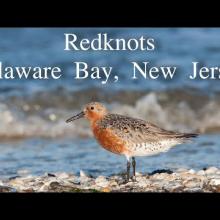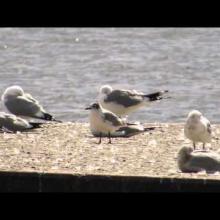

Join BirdNote tomorrow, November 30th!
Illustrator David Sibley and actor H. Jon Benjamin will face off in the bird illustration battle of the century during BirdNote's Year-end Celebration and Auction!
Some gulls and terns may show a glowing pink color, similar to that of flamingos and spoonbills. This pink color comes from pigments in the birds' food called carotenoids. These gulls and terns are able to convert these naturally occurring pigments to hues that may enhance their success at attracting a mate.
BirdNote®
Have You Ever Seen a Pink Gull?
Written by Bob Sundstrom
This is BirdNote.
If we think of pink birds, flamingos and spoonbills might come to mind.
But gulls and terns can also have glowing pink breasts.
[Franklin's Gull calls, https://macaulaylibrary.org/asset/31869631 ]
We picture these seaside birds decked out in their standard colors of gray, white, and black. Yet several gull and tern species greet spring with a rosy blush on their breasts. Franklin's Gulls, flying north to nest in the prairie wetlands, glow reddish-pink below—flashy enough that in the 19th century, the bird was known as "Franklin's Rosy Gull."
The Laughing Gull, common along the Atlantic and Gulf coasts, may also show a suffusion of pink.
[Laughing Gull call: https://macaulaylibrary.org/asset/229275 Laugh: https://macaulaylibrary.org/asset/68765181 ]
The pinkest of all of this group are Roseate Terns, which have some pink all year, but reach their showiest at the start of the breeding season.
[Roseate Tern call, https://macaulaylibrary.org/asset/66304761 ]
This is true of all pink-breasted gulls. The rosy glow, present in both males and females, may signal that the birds are physiologically ready to pair up and begin breeding and nesting.
That pink blush ultimately comes from pigments in the birds' food called carotenoids (pron: kuh-ROT-un-oids). These gulls and terns are able to convert these naturally occurring pigments to hues that may enhance their success at attracting a mate — and help foster the next generation of the rosy-breasted.
For BirdNote, I’m Mary McCann.
###
Bird sounds provided by The Macaulay Library of Natural Sounds at the Cornell Lab of Ornithology, Ithaca, New York. Recorded by Paul Marvin and Bob McGuire.
BirdNote’s theme music was composed and played by Nancy Rumbel and John Kessler.
Producer: John Kessler
Managing Producer: Jason Saul
Associate Producer: Ellen Blackstone
© 2018 Tune In to Nature.org May 2018 / June 2022 Narrator: Mary McCann
ID# plumage-04-2018-05-16 plumage-04
Did you know?
The Franklin's Gull is a "half-time seagull." They spend much of their lives away from the ocean, breeding in colonies on lakes all across inland North America. Learn more in this BirdNote Daily episode.







